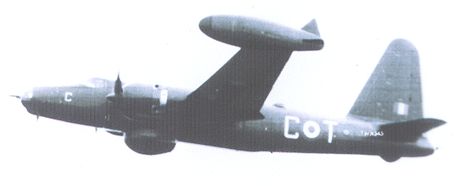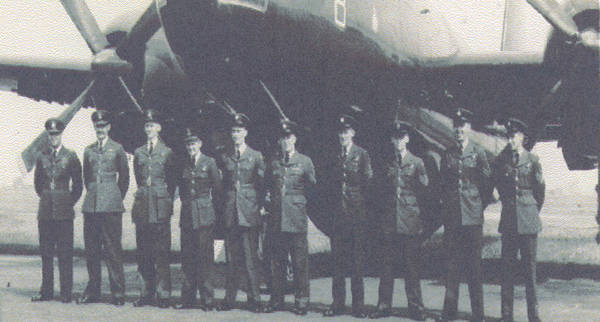|
|
|||||||||
|
|
|
|
|
|
|
|
|
|
|
|
|
|
|
|
||||||
The Mull of Kintyre has tragically been the scene of a relatively large number of aircraft crashes over the years; some have speculated that the cause for this was the alleged unusually high deposits of magnetic ore in the hills causing mayhem with navigation equipment, others blame it on the natural hazard that the hills provide, rising steeply from, and jutting out into, the Irish Channel. Whatever the reason the hillside has taken its toll almost since man first started to fly, right up until relatively recent times with the loss of an RAF Chinook in 1994 carrying security personnel from Ireland to Inverness.
Anyone who's wandered the hills around the area can still see the remnants of some of the aircraft that have come to grief. One of the more intact parts of wreckage belonged to an RAF Maritime plane, and I was recently contacted by Bill Lovelock who had a lot of information about it, so for my own interest, and for anyone who's wanted to know a bit more about the history surrounding these relatively anonymous pieces of wreckage, hopefully the following will fill in some of the gaps.

Lockheed P2V5 Neptune
WX545 Ex-36 Sqn, R.A.F.
BACKGROUND
In the years following the Second World War the number of aircraft aligned to
Coastal Command duties was drastically cut; during the war the Americans had
loaned a number of B-17 Flying Fortresses and B-24 Liberators, all of which
were recalled at the end of hostilities. Demobilisation exacerbated the problem
by creating a real dearth of flight crew to operate these aircraft. Avro, the
aircraft manufacurer, had a replacement, the Shackleton, already on the drawing
board but it would be some years before these entered service and a replacement
was needed immediately. The Lancaster B.III was adapted to better fit the role,
but events soon conspired to leave the RAF needing to find additional aircraft.
With the creation of NATO (North Atlantic Treaty Organisation), Great Britain found itself with a vast area of sea to patrol and not enough aircraft to cover it. After a period of negotiation the Americans once again provided a temporary solution in the shape of their Lockheed Neptune, 52 of which were borrowed under the terms of the Mutual Defence Aid Pact (MDAP).
NO 36 SQUADRON
Formed on 1st February 1916 at Cramlington, Northumberland, 36 Squadron was
initially entrusted with the aerial defence of the city of Newcastle, although
this was soon extended to cover the Tees and Forth areas with flights detached
to Seaton Carew and Turnhouse (now better known as Edinburgh International airport).
Disbanded not long after the end of World War I on 13th June 1919, the Squadron
was reformed nine years later at Donibristle, Fife, this time with a focus on
torpedo bombing. This was a period of considerable overseas deployment, with
action in the Far East during World War II, in fact the end for the Squadron
came this time through attrition and not by command. Deployed to Malaysia in
December 1941, by the middle of March the following year the squadron had been
completely wiped out after a number of difficult, and at times suicidal missions.
Reformed in October of the same year, the squadron saw action in India, North Africa, Gibraltar and Italy, before being moved back to the UK and coastal command duties in April 1944. Initially patrolling the South Coast and Bay of Biscay from Chiveno air base, the squadron finished the war at Benbecula in the Hebrides, being once again disbanded on 4th June 1945.
The Squadron re-appeared briefly from 1st October 1946 until 14th October 1947, when No. 248 Squadron was renamed as 36 Squadron, but thereafter it remained dormant until 1953 when it reappeared as part of the expansion of Coastal Command brought about by the formation of NATO.
THE MULL OF KINTYRE
With the squadron reformed in 1956, it was equipped with the American Lockheed
Neptune, and found itself operating out of RAF Topcliffe in Yorkshire. The initial
members of the squadron were transfered from 203 squadron who also operated
from Topcliffe.
In October of that year seven Neptunes from 36 squadron were sent to RAF Ballykelly in Northern Ireland to participate in a month long course at the Joint Anti-Submarine School in Londonderry. The course consisted of lectures and demonstrations as well as one minor and two major exercises. The first major exercise on the evening of 9th October involved a joint ships and aircraft operation against submarines in inshore waters. These exercises, in which the Neptunes simulated attacks on Royal Navy submarines, involved them flying at a height of about 50 feet above sea level. Shortly after midnight on the 10th of October, Neptune number WX545 had just completed a simulated attack on a submarine operating close to the Mull of Kintyre when it failed to clear the Mull on pulling out of the attack. All nine of her crew were tragically lost.

36 Squadron 1955/56
Left to Right - F/Lt. Finding, F/Lt. Hillman, F/O Mason, F/O Rishton,
Sgt. Armstrong, F/Sgt. Ball, F/Sgt. Jones, Sgt. Kirk, F/Sgt Noble, Sgt. Lynn.
Finding, Rishton, Armstrong, Noble & Lynn were on board the ill fated flight.
Memorial Events
On the 9th of July 1998 a Memorial dedication was held
for the crew on the Mull of Kintyre, with a second service being held at Topcliffe
village church, where most of the crew are buried, on October 10th. A pictorial
summary of the events on the Mull is here.
The RAF Leuchars Mountain Rescue Team, on discovering that a memorial stone had been erected, asked if they could attach a memorial plaque to the stone. This took place on the 50th anniversary of the crash, 10th October 2006. Click here for a summary of the event.